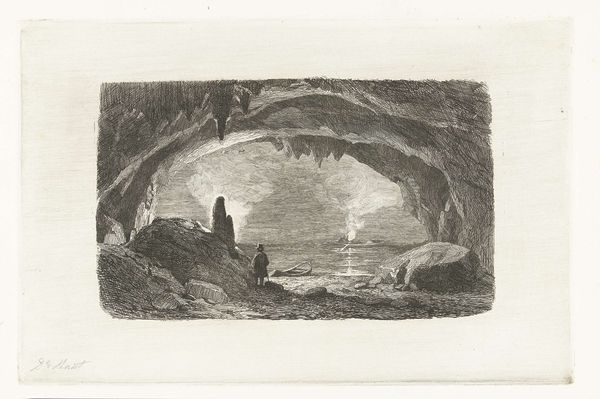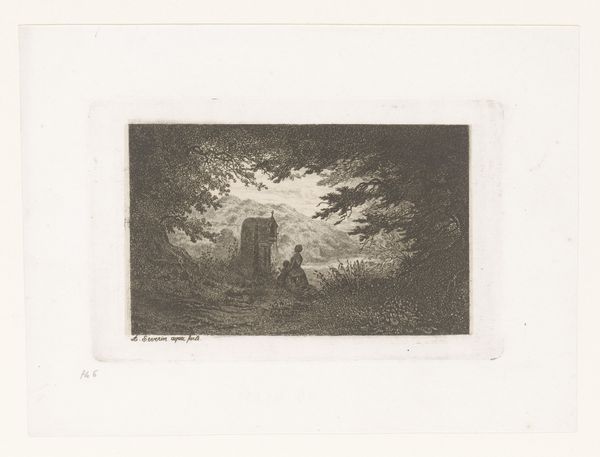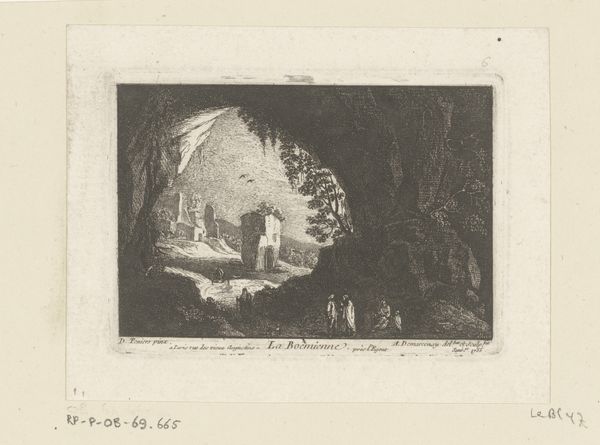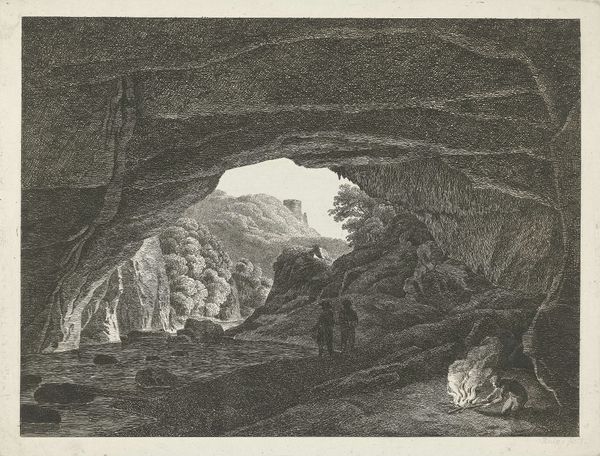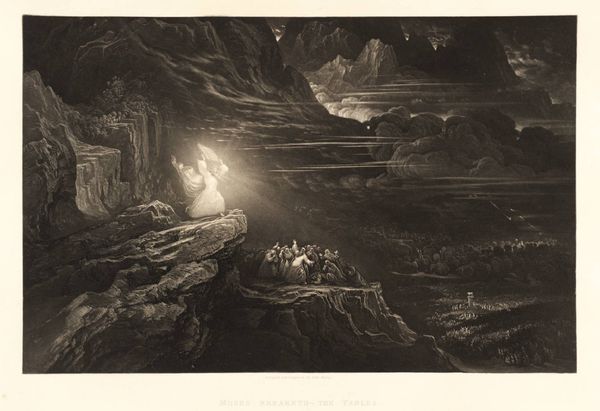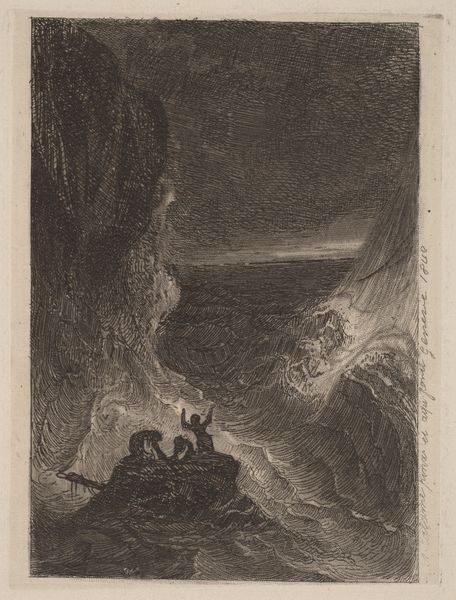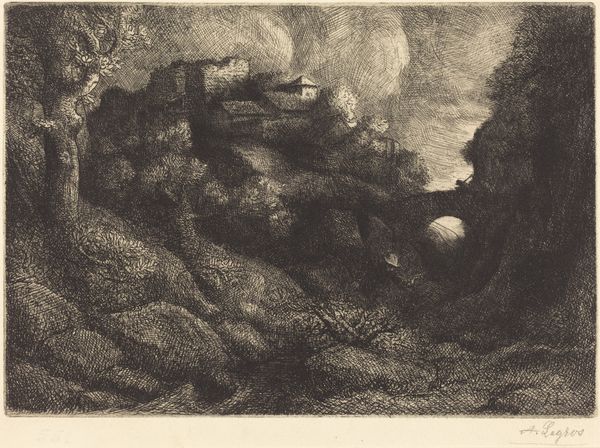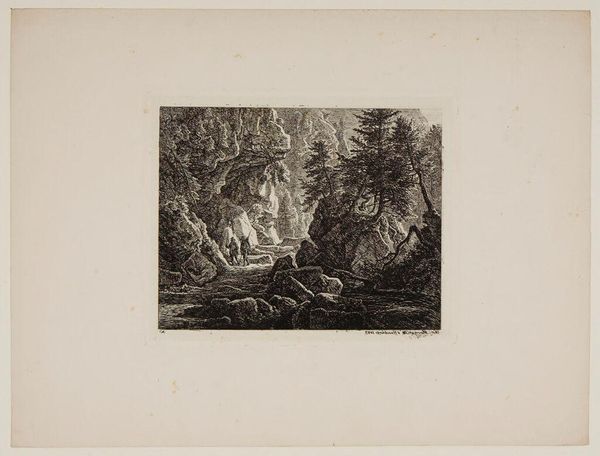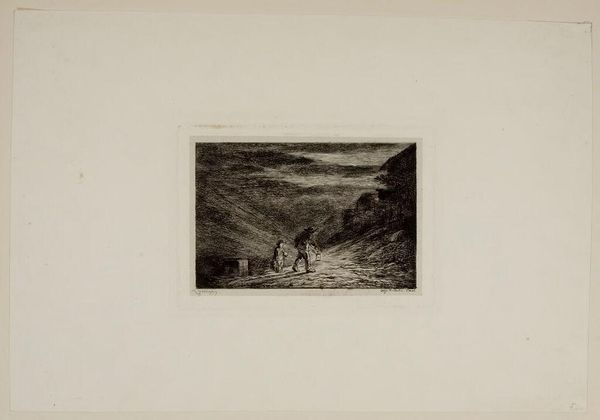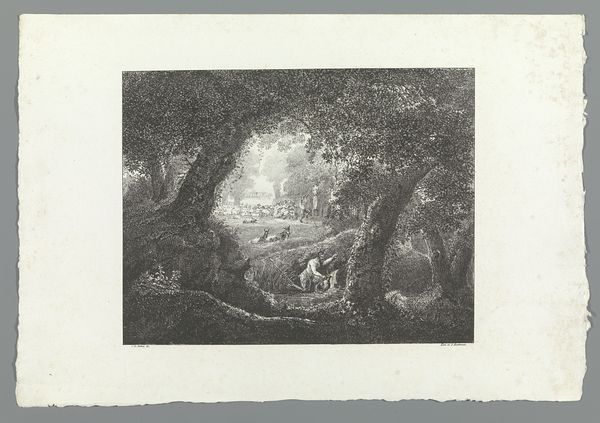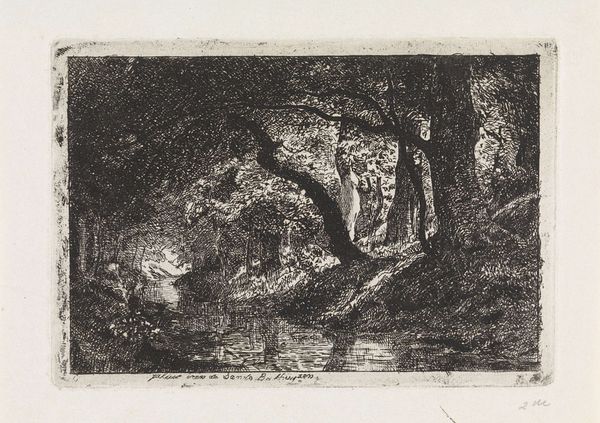
print, etching
# print
#
etching
#
old engraving style
#
landscape
#
romanticism
#
chiaroscuro
#
limited contrast and shading
#
line
#
genre-painting
Dimensions: height 203 mm, width 305 mm
Copyright: Rijks Museum: Open Domain
Editor: This is Pierre Louis Dubourcq’s "Man met roeiboot in de grotten van Han," from 1849. It’s an etching, and the atmosphere is incredibly dramatic. It looks almost like a stage set. What can you tell me about it? Curator: It's a fascinating image that really encapsulates the Romantic era's fascination with the sublime. Think about the social context: this is just before widespread photography. Etchings like this served as vital forms of visual documentation and dissemination. How do you think the public’s access to images like these shapes their understanding and perception of landscape and nature? Editor: Well, seeing it only as an etching must change your relationship to the real location. It almost makes the real place seem fictional. Curator: Precisely. Dubourcq isn't just depicting a cave; he's constructing an idea of one. Consider how the dramatic chiaroscuro—the stark contrast between light and shadow—amplifies the sense of mystery and awe. This wasn't simply about recording topography; it was about evoking an emotional response, and perhaps, solidifying a shared cultural experience and a sense of national pride in these grand natural features accessible for some travelers. Editor: So, in a way, it's not just a landscape, but also a piece of social commentary? Curator: Absolutely. Images like these participated in constructing cultural narratives around nature, exploration, and the picturesque, catering to the rising bourgeois class that wanted to see these kinds of scenery reproduced in collectible prints. Did many people travel to the caves, or did the print stand in for that experience? That's a political issue too. Editor: That's a really insightful way to look at it. I always considered landscape art as apolitical. Curator: Well, landscapes are rarely just about pretty scenery, are they? It makes me think about the relationship between artistic production and its audiences. Editor: Definitely food for thought. I'll never look at a landscape the same way!
Comments
No comments
Be the first to comment and join the conversation on the ultimate creative platform.
